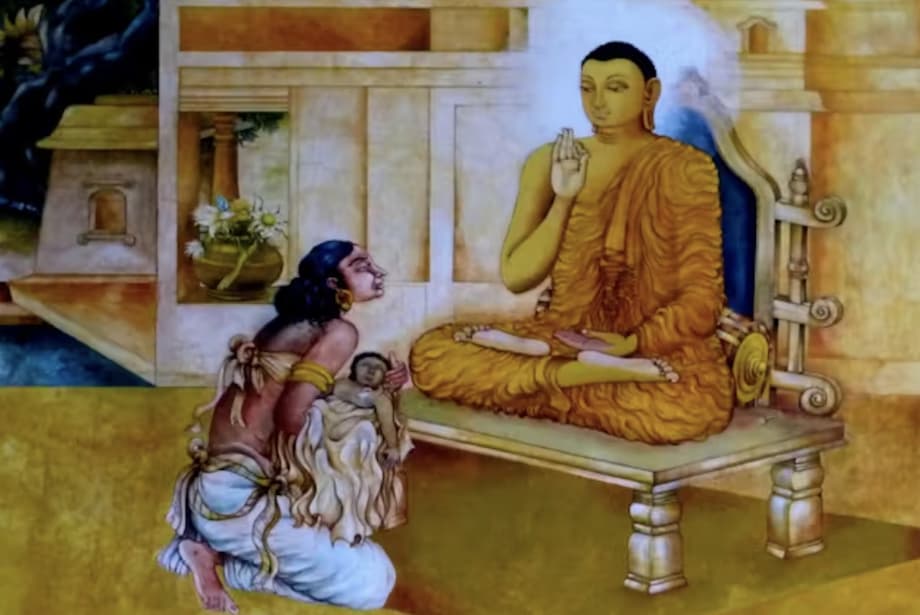The Digital Resurrection: AI Avatars and the New Face of Grief
In recent years, artificial intelligence has begun to reshape how we mourn, remember, and even interact with the dead. From AI-powered chatbots that mimic the voices and personalities of lost loved ones to virtual reality reunions that allow bereaved families to “see” and “speak” with the deceased, technology is offering new ways to keep memories alive. But as these innovations become more sophisticated and accessible, they are also raising profound questions—especially for traditions like Buddhism, which has long grappled with the nature of suffering, attachment, and impermanence.
- The Digital Resurrection: AI Avatars and the New Face of Grief
- How AI Is Changing the Way We Grieve
- Buddhist Teachings: Suffering, Attachment, and the Nature of Reality
- Community, Ritual, and the Importance of Letting Go
- The Psychological and Ethical Dilemmas of Digital Afterlife
- Legal, Cultural, and Spiritual Implications
- Embracing Impermanence: The Buddhist Alternative
- In Summary
At the heart of this debate is a simple yet powerful story from the Buddhist canon: the tale of Kisa Gautami, a mother devastated by the loss of her only child. Desperate to bring her child back, she seeks help from the Buddha, who instructs her to find mustard seeds from a family untouched by death. Her search reveals that every household has known loss, leading her to accept her grief and embark on a spiritual path. This ancient narrative resonates deeply in an era where technology promises to bridge the gap between life and death, but may also risk deepening our attachment to what is no longer real.
How AI Is Changing the Way We Grieve
The rise of “grief tech”—AI-powered tools designed to preserve and simulate the presence of the deceased—has been swift and dramatic. Companies like HereAfter AI and StoryFile allow users to upload memories, stories, and even voice recordings to create interactive avatars of loved ones. These digital personas can answer questions, share anecdotes, and even appear as holograms at funerals, blurring the line between memory and presence.
One of the most striking examples came in the 2020 Korean documentary Meeting You, where a grieving mother was reunited with her deceased daughter through virtual reality. The emotional impact was undeniable, but it also sparked debate: does such technology help with healing, or does it risk trapping people in cycles of longing and avoidance?
AI griefbots are now a growing industry, with some platforms offering subscription-based access to digital versions of the departed. As Euronews reports, these tools can provide comfort and even help people discover new stories about their loved ones. Yet, mental health professionals and ethicists warn that excessive reliance on digital avatars may hinder the natural process of grieving and moving on.
Beyond personal use, AI avatars have even appeared in courtrooms, with digital recreations of victims delivering statements. The technology is advancing rapidly, but so too are the ethical, legal, and psychological questions it raises.
Buddhist Teachings: Suffering, Attachment, and the Nature of Reality
Buddhism offers a unique lens through which to examine the phenomenon of AI grief avatars. Central to Buddhist philosophy is the understanding that suffering (dukkha) arises from attachment and clinging to illusions. The story of Kisa Gautami is often cited as a parable about the universality of loss and the futility of seeking to reverse death through external means.
According to Mahayana Buddhism—the most widely practiced form in East Asia and the Himalayan regions—the path to liberation begins with recognizing the insubstantial nature of all phenomena. The 14th-century text 37 Practices of All the Bodhisattvas by Gyelse Tokme Zangpo advises practitioners to “let go of grasping and see pleasant things as rainbows—beautiful but devoid of substance.” In this view, digital avatars of the deceased may offer fleeting comfort but risk intensifying attachment to what is ultimately an illusion.
As one Buddhist studies scholar reflected, “Creating a digital afterlife for loved ones may inadvertently enhance suffering, and what alternative ways of grieving Buddhism might offer.” The concern is that interacting with griefbots could distort authentic memories and replace them with idealized, inauthentic versions, making it harder to accept the reality of loss.
Vajrayana Buddhism and the Transformation of Grief
Within Vajrayana Buddhism, particularly the Great Perfection (Dzogchen) tradition, emotions like grief are seen not as obstacles to be suppressed, but as opportunities for spiritual insight. Patrul Rinpoche, a revered 19th-century teacher, taught that all thoughts and emotions—pleasant or painful—should be allowed to settle naturally, like clouds passing through the sky. Our true nature, he said, is the awareness that remains unchanged behind these passing experiences.
This approach encourages individuals to allow grief to unfold, transforming it into compassion for oneself and others. In a culture that often seeks to eliminate negative emotions, Buddhism teaches that not pushing away grief is an act of kindness and a catalyst for awakening to the interconnectedness of all beings.
Community, Ritual, and the Importance of Letting Go
Buddhist traditions emphasize the communal processing of grief through rituals and shared practices. One of the most significant is the 49-day service, during which families gather to pray, make offerings, and support the transition of the deceased’s consciousness to the next life. This period is seen as a critical time for both the living and the dead, providing space for mourning, reflection, and the cultivation of merit through acts of generosity.
These rituals stand in stark contrast to the limited bereavement leave common in many Western societies, where individuals may be expected to return to normal life within days of a loss. By offering structured time and communal support, Buddhist practices help families process grief in a way that acknowledges both the pain of loss and the impermanence of all things.
As noted in a recent analysis, “Opting for digital avatars may undermine what Buddhism considers critical moments for genuine transformation and connection.” The temptation to use technology as a shortcut to closure may, in fact, bypass the deeper work of acceptance and compassion that grief can foster.
The Psychological and Ethical Dilemmas of Digital Afterlife
While AI grief avatars can offer solace, they also introduce new psychological and ethical challenges. For some, the ability to converse with a digital version of a loved one provides comfort and helps keep memories alive. For others, it can become a source of distress, blurring the boundaries between reality and fantasy.
As discussed in Buddhist forums and mental health circles, there is concern that AI griefbots may encourage unhealthy attachments and prolong suffering. Some users report feeling “heartbroken” when their AI companions are deleted or when the platforms hosting them shut down, experiencing a unique form of loss that is both real and intangible.
Georgina Sturmer, a counselor specializing in grief, notes, “When we build a relationship with another person, we are aware of the fragility of that relationship. I don’t think that we apply the same understanding to virtual AI relationships. This has meant that the loss has seemed even greater for people who have lost their virtual AI companion.”
There are also concerns about the commercialization of grief. As AI companies monetize digital afterlife services, there is a risk that vulnerable individuals may be exploited, paying for ongoing access to avatars that ultimately cannot replace genuine human connection or the transformative power of mourning.
Legal, Cultural, and Spiritual Implications
The emergence of digital afterlife technologies is not just a personal or psychological issue—it is also a legal, cultural, and spiritual one. Questions about data ownership, consent, and the morality of digital resurrection are still largely unresolved. In some countries, laws are evolving to treat digital accounts as inheritable property, while others struggle with the implications of deepfakes and unauthorized use of a person’s likeness.
Culturally, responses vary widely. In Japan, some Buddhist temples are experimenting with digital graveyards and even AI-powered Buddha avatars that offer spiritual guidance. In other traditions, there is concern that digital immortality may conflict with beliefs about the afterlife, dignity, and the proper way to honor the dead.
As OpenTools and The Conversation highlight, the digital afterlife industry is growing rapidly, but so are the inequalities it may create. Advanced services can be expensive, potentially making digital immortality a privilege of the wealthy. Meanwhile, the emotional and ethical impacts of these technologies remain largely uncharted territory.
Embracing Impermanence: The Buddhist Alternative
For Buddhism, the ultimate lesson of grief is not to avoid or bypass it, but to embrace it as a path to wisdom and compassion. The story of Kisa Gautami endures because it speaks to a universal human longing—to bring back those we have lost—and the painful but necessary realization that all things are impermanent.
Rather than seeking technological solutions to avoid loss, Buddhism encourages individuals to deepen their relationship with impermanence and to cherish the moments they have with loved ones. By allowing grief to unfold naturally, we open ourselves to transformation, connection, and a deeper appreciation of life itself.
As one Buddhist teacher put it, “Grief is not something to be fixed or eliminated, but a process to be honored. In facing our sorrow, we find compassion—not just for ourselves, but for all beings who share in the experience of loss.”
In Summary
- AI grief avatars are transforming how people mourn, offering interactive digital versions of the deceased but raising complex ethical, psychological, and spiritual questions.
- Buddhism cautions against clinging to digital illusions, teaching that suffering arises from attachment and that true healing comes from accepting impermanence.
- Communal rituals and shared mourning practices in Buddhism provide structured support for grief, contrasting with the individualistic and sometimes isolating nature of digital afterlife technologies.
- While AI tools can offer comfort, they may also risk deepening attachment, distorting memories, and hindering the natural process of letting go.
- Legal, cultural, and economic challenges remain unresolved, with concerns about data ownership, consent, and inequality in access to digital afterlife services.
- Buddhism suggests that embracing grief and impermanence leads to compassion and transformation, offering a path that honors both the pain of loss and the beauty of life.












